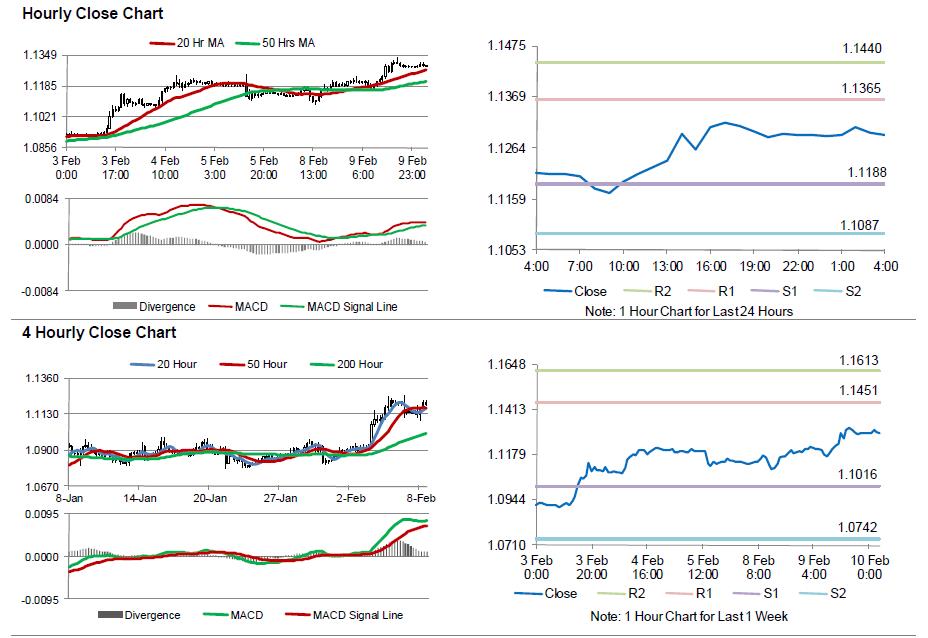For the 24 hours to 23:00 GMT, the EUR rose 0.83% against the USD and closed at 1.1290.
In economic news, Germany’s seasonally adjusted industrial production surprisingly dropped 1.2% MoM in December, registering its strongest drop since August 2014, indicating that the nation’s factory activity is losing steam amid slowdown in major export markets. Meanwhile markets expected it to rise 0.5%, compared to a revised fall of 0.1% in the preceding month. Additionally, the nation’s trade balance registered a less than expected surplus of €18.8 billion in December, down from a revised surplus of €20.5 billion and compared to market expectations for it to narrow down to €20.0 billion.
In the US, the NFIB business optimism index fell more than anticipated to a nearly two-year low level of 93.9 in January, amid growing concerns about economic slowdown in the nation. Markets expected it to fall to a level of 94.5 and following a reading of 95.2 in the previous month. On the other hand, JOLTS job openings climbed more than expected to a level of 5607.0K in December, from a revised level of 5346.0K in the preceding month.
Other macroeconomic data showed that wholesale inventories in the nation declined less than expected by 0.1% in December, after recording a drop of 0.4% in November.
In the Asian session, at GMT0400, the pair is trading at 1.1289, with the EUR trading flat from yesterday’s close.
The pair is expected to find support at 1.1188, and a fall through could take it to the next support level of 1.1087. The pair is expected to find its first resistance at 1.1365, and a rise through could take it to the next resistance level of 1.1440.
Going ahead, investors await the release of European Commission’s economic growth forecast report, due later today. Additionally, US MBA mortgage applications data, set for release later in the day, will also attract a lot of market attention.
The currency pair is trading above its 20 Hr and 50 Hr moving averages.

